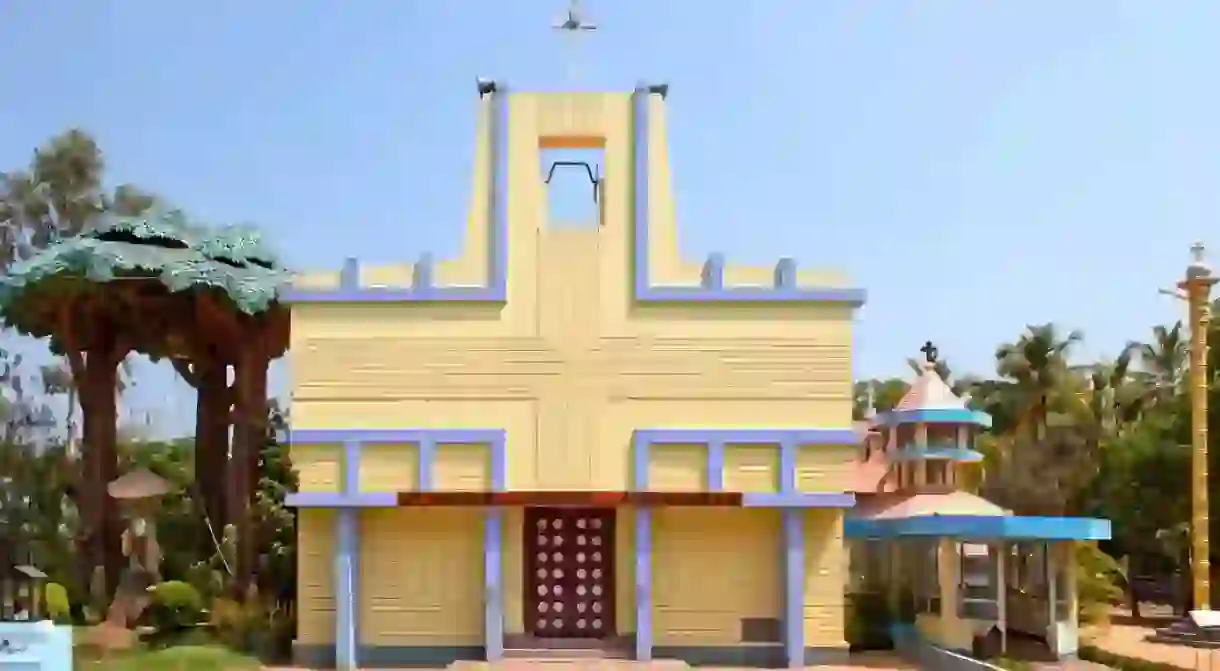Southern India’s Exuberant Pastel-Coloured Churches in Pictures

After travelling across India, German duo Haubitz+Zoche developed a photo series documenting Kerala’s quirky candy-coloured Postcolonial Catholic churches that display a unique hybrid style unlike anything else in the world.
In Kerala, India, the postcolonial era brought a wave of revolutionary ecclesiastical architecture following the country’s long-awaited independence in 1947.
Desperate to liberate itself from British rule, a Keralite religious community called the Syro-Malabar Catholics embraced the simplicity of Modernism to create a unique hybrid architectural style. Colourful Modernist facades started to pop up between traditional colonial buildings, and biblical symbolism was translated into bizarre monumental structures, ranging from St Theresa’s ark-shaped building in Eravu to the Assumption Church in Mupliyam, which sprouts a pair of gigantic palms.

These churches became a source of fascination for German photographers Stefanie Zoche and the late Sabine Haubitz, who dedicated eight weeks to visiting southern Indian cities and villages to document its outré architecture.
“This literal translation of symbols into architectural forms combined with the use of striking colours is to my knowledge quite unique in the world,” says Zoche.

While there are clear references to Western style, including the pastel-coloured Miami Modernist (MiMo) architecture and elements of Le Corbusier’s projects in Chandigarh during the 1950s, the cross is about the only obvious symbol of conventional Christian iconography that was retained. Southern India in particular began to reject the quotidian colonial style in favour of a new liberal and fluid architectural form that revived its distinctive regional nuances and embraced Expressionism.
“Between the 1950s and the 1970s, there was a turn towards Modernism and the cleanliness of Modern architecture became popular, even in religious buildings, such as architect Charles Correa’s Portuguese Church in Mumbai,” said Rohan Shivkumar, co-author of Haubitz+Zoche’s book Hybrid Modernism (2016).

Haubitz+Zoche’s photographic collection ‘Hybrid Modernism. Churches in Kerala’ is currently on view in Postcolonial Enlightenment at Zephyr in Mannheim, Germany, which sits alongside ‘Hybrid Modernism. Movie Theatres in South India’ – an earlier series that documents the country’s equally unconventional local cinemas.
You might also like: ‘India’s Greatest Architect’ Charles Correa





















